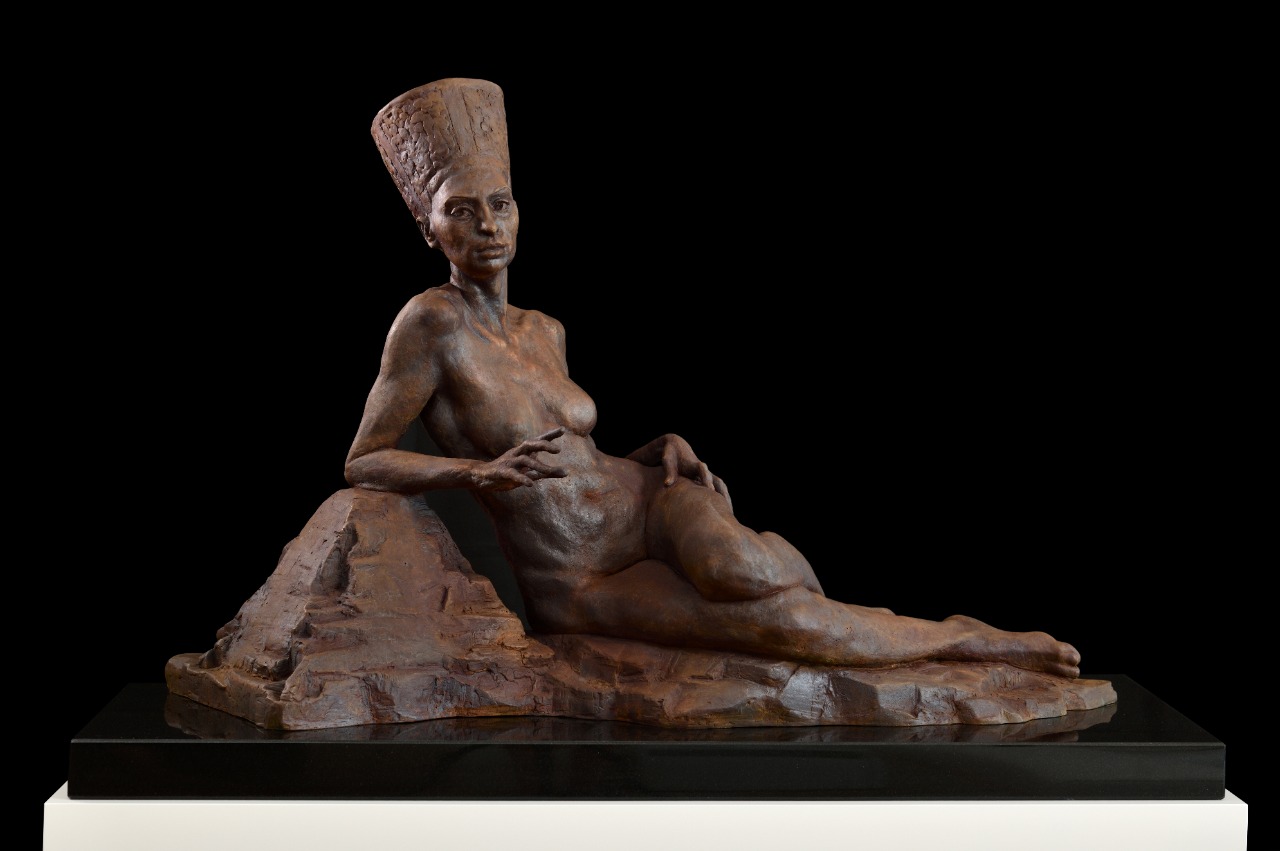A trained medical doctor, Dr Gindi models her three-dimensional figures by revealing the multiple levels of infinity inherent in our existence. She is an Art Salon 2021 finalist for her recent work ‘Transfigured Immortality’. Dr Gindi is living and working in Switzerland.
1. What inspired you to work as sculptor as you were associated with the medical field?
I was educated as medical doctor. The more time I spent working as physician, the more I wanted to create art to reflect on what I was experiencing, particularly the essence of physical fragility. I learned that our preconscious and unconscious desires are buried deep below the surface. Connecting human anatomy with the anachronism of the human psyche became the lexicon of my work and the monad of me as a sculptor – I am a sculptor dedicated to model the infinity of our existence.
As a sculptor, I want to break free from the constraints of the rational mind. Educated in classic sculpting – two decades after my initial foray into medicine – I now oscillate between references in the material world and the intended depth of universal oblivion.
2. Does your training as a medical doctor helped you as a sculptor?
My training as a medical doctor and study of human anatomy might have led to higher levels of purity in my sculptures. The inner elements that impart authenticity are almost naturally evolving into morphological structures. As a result, my works do not represent the depiction of lifeless specimens; rather I aspire to explore the essence of the way we are.
The human is always in the centre of my creative musings – I revel in the physical aspect of humanity, but also in the psyche of the fleshy nature. The finer elements that impart authenticity are almost naturally accomplished and thus compelling in and of themselves. As an artist, I then apply the intertwined processes that create both human subjects and human objects.
3. Could you describe your style of work?
Sculpture is a world of three-dimensional media enabling to step into the viewers’ world in a very direct and physical way. When you witness sculpture, you don’t just experience it from one perspective, you view it from multiple angles like a thousand compositions mould into one, you also relate to it differently. It is probably one of the oldest art forms to exist, rooting itself as a widespread practice even in the ancient Nile Valley Civilisation. In ancient times, sculptures played a significant part in documenting life.
Talking about my own style, I start to work with pieces of clay. I am going to form the first contours, put further bits of clay on, the figure grows in front of my eyes. This process is mostly intuitive. The bend of a bone, the edge of a drape, the texture of a surface.
Very much depending on the mood for the day. It rarely happens that the first touch becomes the finished sculpture. I know that I and my sculpture are going to transform during this whole process, but I just start somehow, somewhere. As paradoxical it may sound: I am not making the sculpture, the sculpture makes itself and surprises me, with blazing intensity.
4. Why do you favor bronze in your sculptures?
I currently mostly work with bronze, starting with the anatomical modelling of the subject in clay. I choose bronze for its perenniality and its vibrational traits, as well as its ability to lock and reveal placed ardour. There is something intrinsically sensual about bronze, especially the alloy.
You can touch the skin of your sculptures, it is part of you and it embodies and imbues the personality and lustre of the spectator. Bronze has an eerie element of perseverance – it can last for thousands of years and ages gracefully, acquiring with time a variety of finishes due to the intensity of the patina and how it interacts with the environment. The alchemy of patination symbolizes the very transient nature of being.
5. What were your idea behind exploring infinity?
I have been interested in creative expressions in one form or another for as long as I can remember. While infinity caught my imagination even during my younger years, I began dwelling upon it deeply as a freshwoman in medical school.
We are all bound together by the human question of origin and destiny. Over the years, my experience in both science and life has taught me that our existence and options are infinite – if we allow them to be. Submitting to fate and having a sense of resignation can often be the norm, but if we can metamorphosize these attitudes, we will be able to model the infinity of our existence.
‘Transfigured Immortality’ is a current work that explores an area that is on the periphery of infinity. It is one that most humans, since antiquity, will no doubt have pondered upon – of bequeathing a legacy. It depicts a female pharaonic character in the prime of her life, leaning on her last place of rest. Anticipating her death, she is shaping the future with a sense of purpose.
This piece originated in a phase of mourning after the death of a close Egyptian relative. I wanted to explore the essence of infinity omnipresent in ancient Egyptian mythology. Death is not the end of life but rather the assumption of a different dimension. By realizing and grasping the ultimate infinity inherent with our own life we can live fearlessly and vigorously.
Readers can communicate with Dr Gindi through www.dr-gindi.com or Instragram @gindisculptor
This is a Contributor Post. Opinions expressed here are opinions of the Contributor. Influencive does not endorse or review brands mentioned; does not and cannot investigate relationships with brands, products, and people mentioned and is up to the Contributor to disclose. Contributors, amongst other accounts and articles may be professional fee-based.

